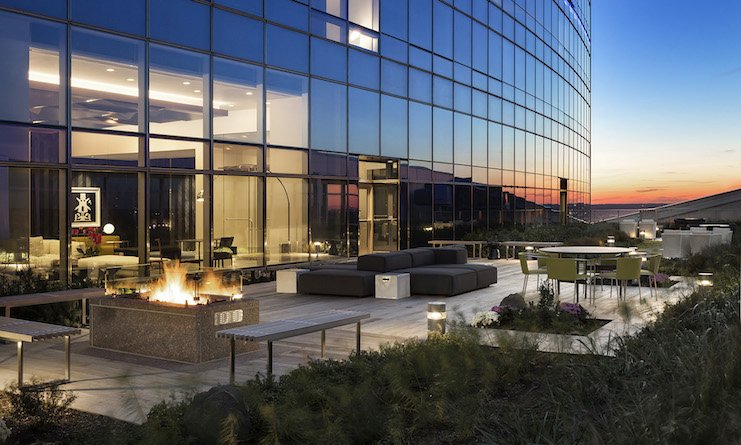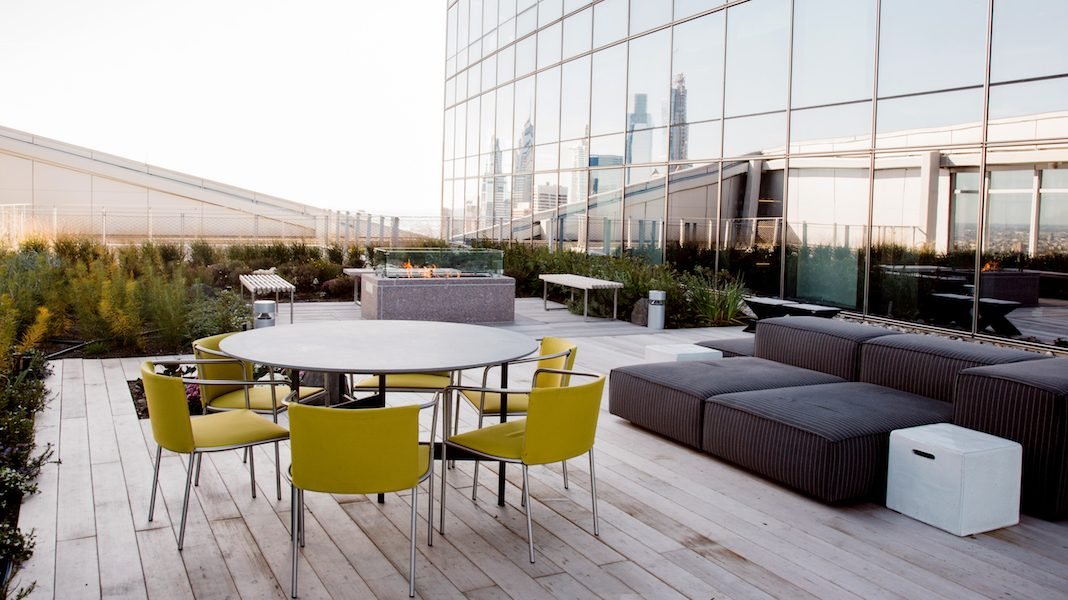The lobby fireplace has long been a staple in certain types of lodging properties—from ski-in resorts to country inns. With an ever-growing focus on making public spaces more engaging and attractive to guests, hotels across a variety of markets and segments are increasingly designing indoor and outdoor spaces to include fireplaces and fire pits. These natural gathering places are designed to draw guests in and encourage them to linger longer.
Ryan R. Bruce is an associate at BLT Architects (BLTa), a firm that has worked on hospitality projects including The Logan and AKA University City, both in Philadelphia. The latter property includes Level 28, a full-floor lifestyle club exclusively for guests of AKA University City. The 25,000-square-foot amenity towers above the University City neighborhood, offering views of the city from its terrace and four-season greenscape with a sky-high fireplace 400 feet above street level.
Bruce explains that fire elements work well as a design element because they help organize an open-concept space, whether using smaller features that are more intimate or larger pits for social gatherings. “There’s nothing like a fire to bring people together,” Bruce says. “The fire pit has allowed hotels to expand their amenity space into outdoor areas. While most fire pits do not really produce much usable heat for those around it, the impression of warmth and the intrigue of a fire can also extend the season for these outdoor areas, even in colder climates.”

Because of these benefits, fire features have become an expected amenity for many mid- to upper-scale hotels, Bruce adds. “For hotels in particular, designers have realized that fire features have this ability to all at once create ambiance, visual drama, and a sense of warmth in public spaces,” he explains. “For years now, renovated and new hotels have incorporated fire features into their indoor and outdoor spaces and now it is a matter of keeping up with the Jones’.”
While popular, fireplaces and pits are not as simple to incorporate into a space as other design elements due chiefly to safety concerns. “It is a challenge to find a balance between an open fire that is welcoming and protective measures like glass walls that can reduce accidents,” Bruce says. Code-mandated measures, such as automatic and manual shutoffs, help provide guidance for designing fire-based elements and addressing safety concerns, he explains. “The fire itself also needs to be designed early in the design process in order to achieve the size and height of fire that guests are expecting,” Bruce concludes.








